I took my bike to Centennial Woods – my favorite mode of transportation when it comes to short distances. I love riding on wheels because I feel super cool and I like feeling my legs and heart move. I like feeling the wind push my hair back and cool the sweat off my face. I know my desire to move is not contributing to greenhouse gas emissions when it comes to commuting at somewhat fast times. My bike frame is black and has sparkles so I feel even more super cool.
I have a Bianchi bike – it’s an Italian bike brand. My grandpa got it for me because 1. we both like bikes and 2. he is into his Italian culture and wanted to preserve it through me by giving me an Italian bike. It’s a road bike, meaning it has thin tires and goes fast, especially going down hills. It was about a 7-minute bike from Redstone as opposed to a 20-minute walk. To be honest, it is harder to use around Burlington than around Kent Island (my hometown) because Burlington is insanely hillier. I can easily bike 12 miles at home but 12 miles around Burlington is a different story. My bike does not have as many gears as I need to bike up hills….soo this makes going up the hill between Coolidge Hall and Redstone Apartments more difficult.
Anyways
My knowledge about bikes is expanding, despite the difficulty of going up hills. Now I know that I need multiple gears as opposed to one…which is what I have. The next project for me is to investigate adding multiple gears onto my bike and physically add them on so I can be more equipt to ride around.
Road biking and Centennial Woods are culturally intertwined because the intention to preserve organic things (nature – trees, moss, birds, heart, brain, beavers, streams the atmosphere, muscles, etc) are shared. Centennial Woods was established to preserve Vermont’s natural biodiversity in the midst of a growing suburban setting. Road biking is a clean mode of transportation.
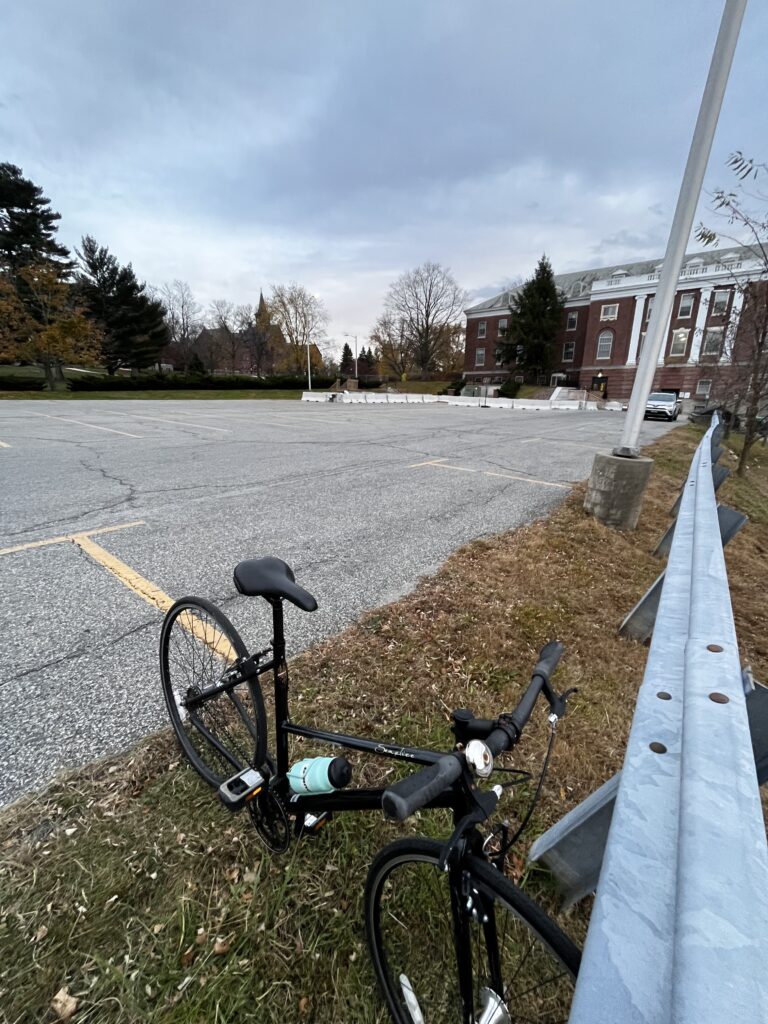
It was raining when I went to Centennial Woods! Foggy light showers are my favorite type of weather – I would have been in an even better mood if I brought my raincoat!
The major landmarks to the tree I’m observing are 1. the first wooden bridge when you enter the woods and 2. a pile of tree trunks laying across the trail. The tree is relatively close to the entrance, so there are not that many landmarks. There is also a pile of dead birches behind my tree…which makes the setting look like a crime scene, as though it maimed them for stealing its space…however, a storm or forestry class most likely took the birches down.
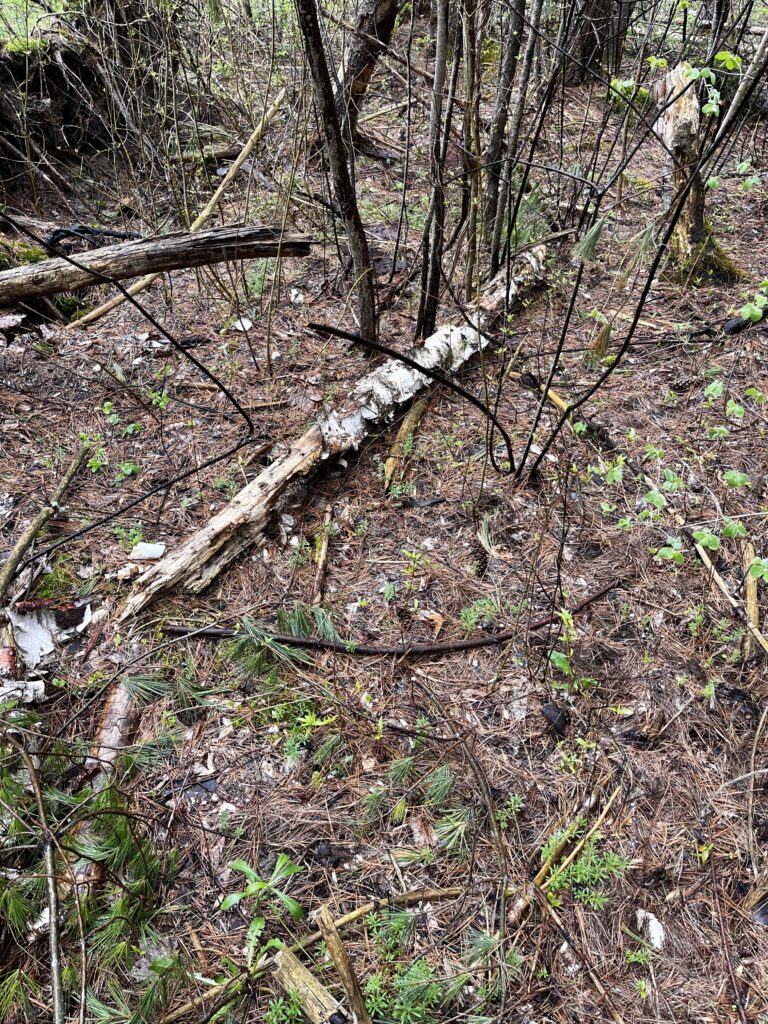
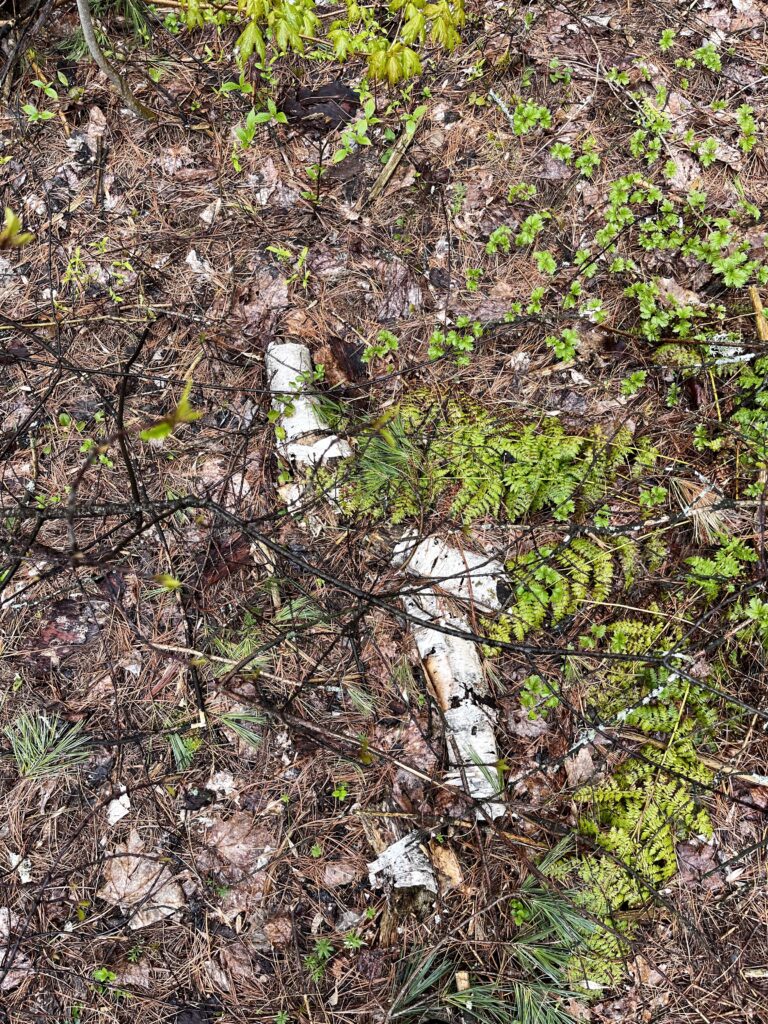
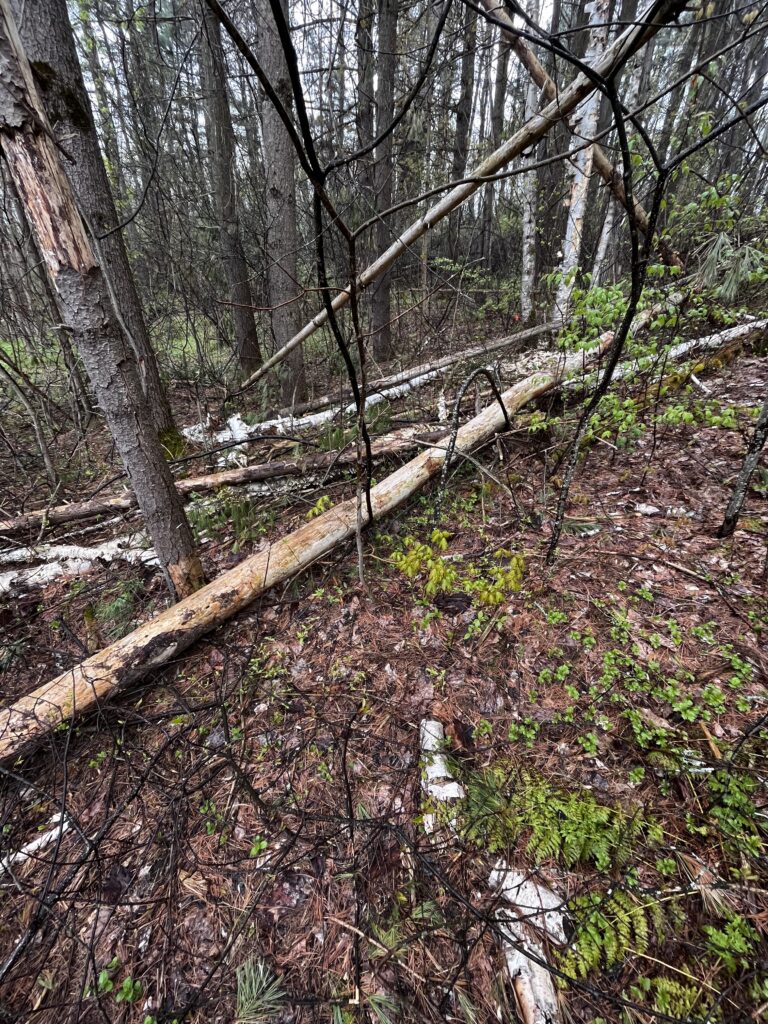
lichens and moss
Buds of baby pannariaceae have started growing on the yellow birch’s bark! This was the first time I noticed this since the last time I visited the tree. According to PictureThis, pannariaceae is a type of lichen. The bark is providing a stable place for it to grow and absorb sunlight, rainwater, and materials from the atmosphere. Lichen is an indicator of clean air – lots of lichen means the air in the setting is clean. This makes sense because clean air is one of the major factors that stimulate growth, given that something like soil is not present for them to grow in.
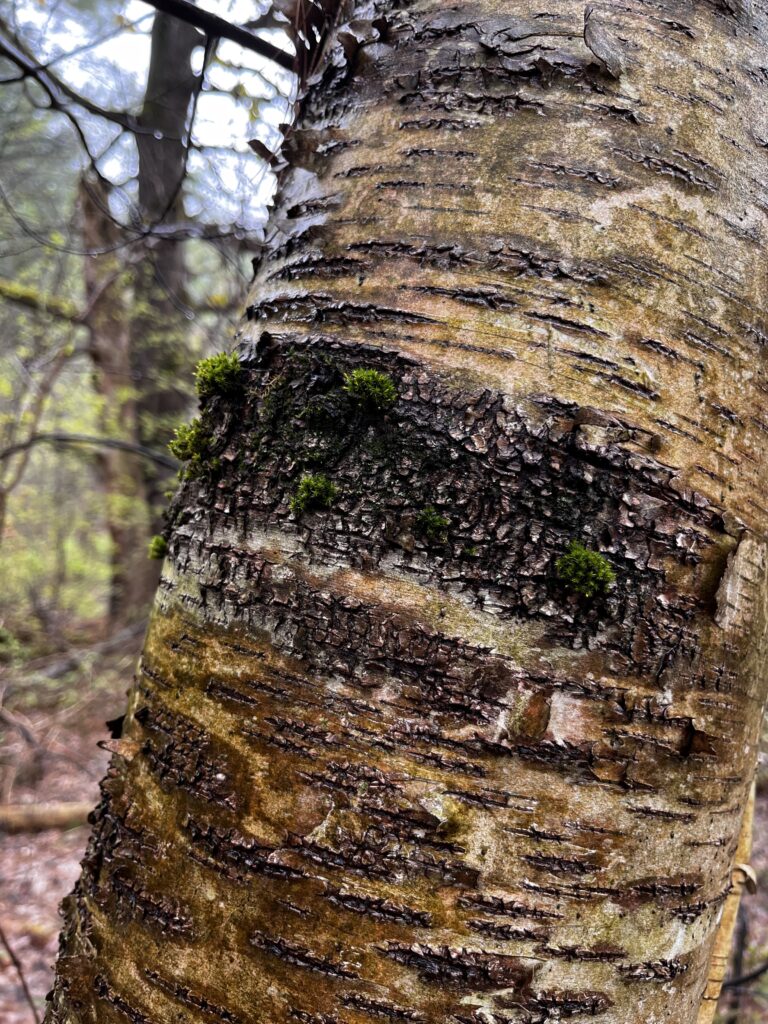
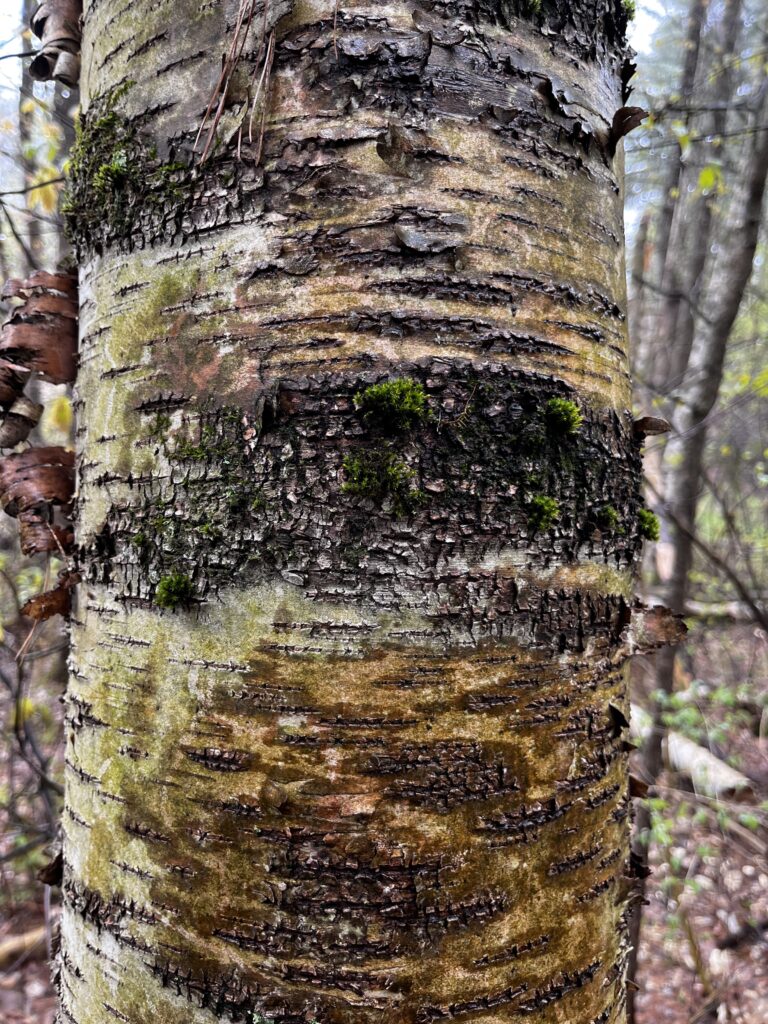
Pannariaceae is not the only organism growing on the yellow birch….
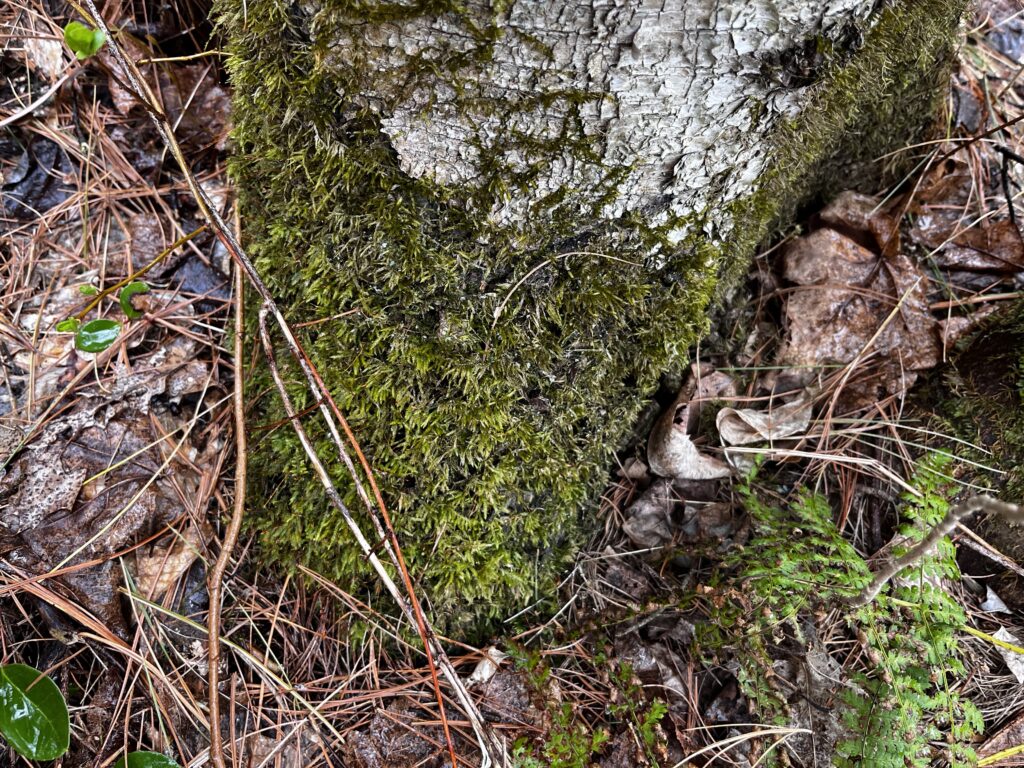
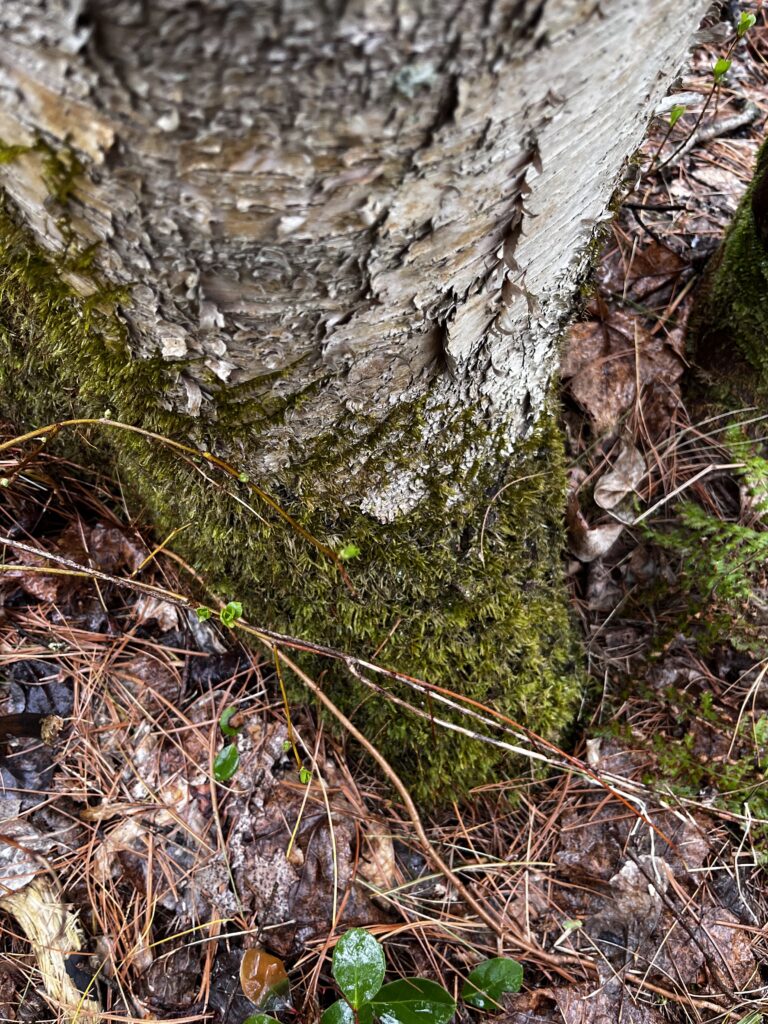
Brook forkmoss is growing as well!
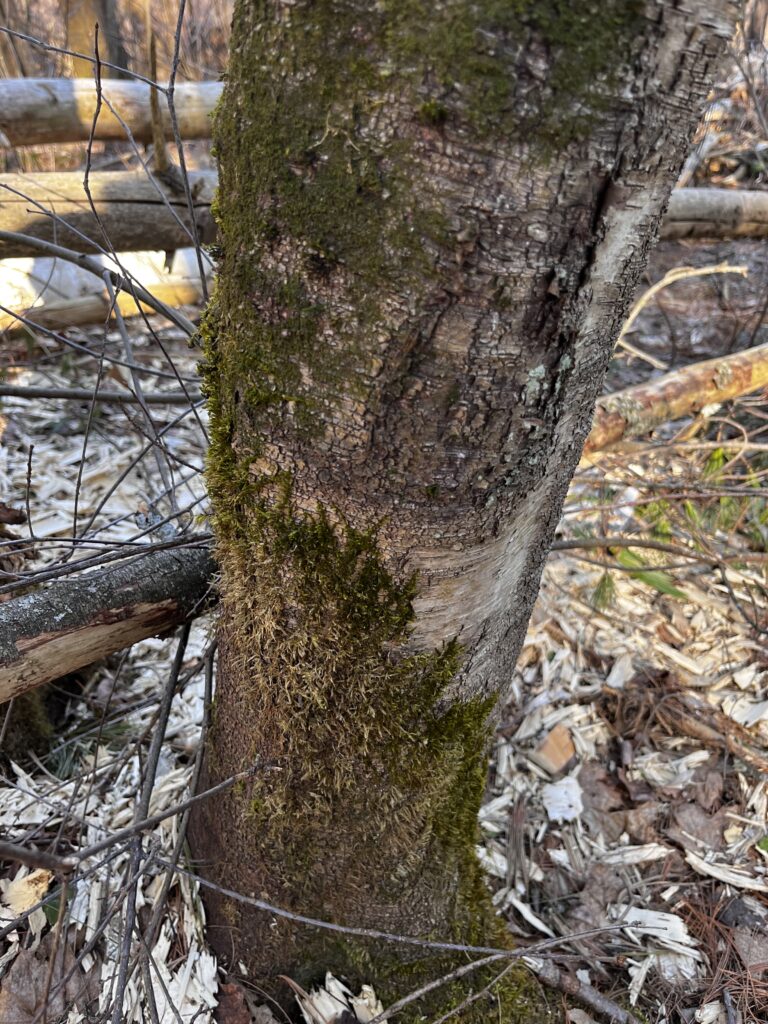
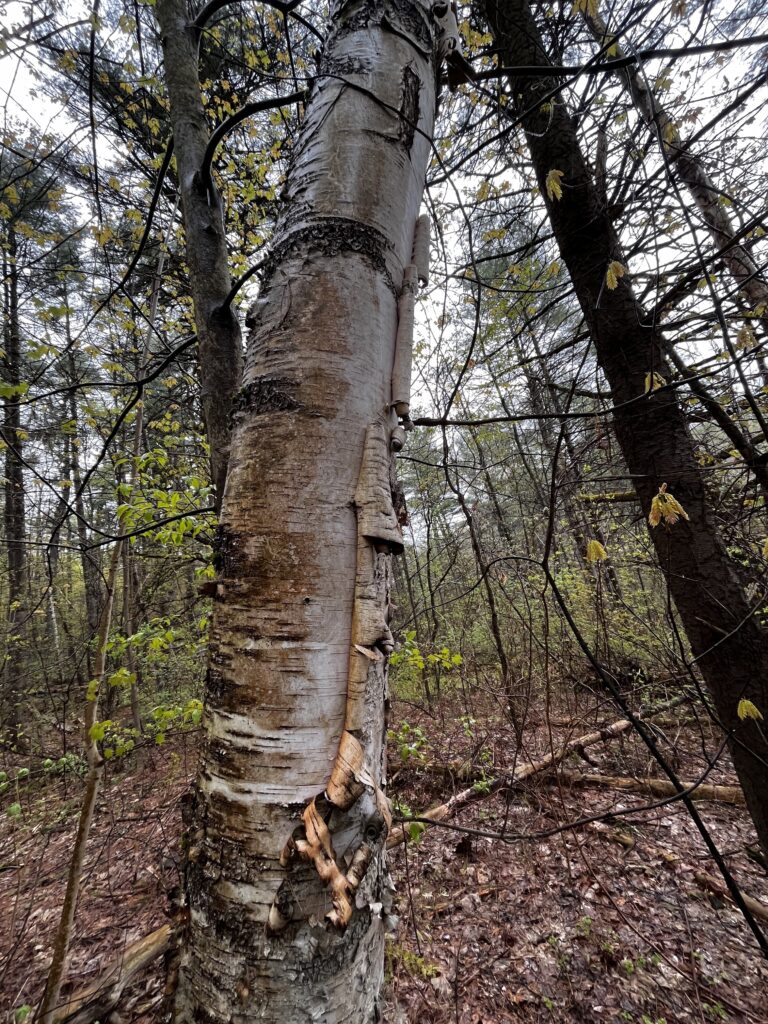

I noticed the moss that was growing at the beginning of April seems to have morphed into the bark when the end of the month came around (compare picture 1 to picture 2)….I do not have an explanation for this and am curious how this happened.
peely bark…?
The bark was noticeably peely than before.
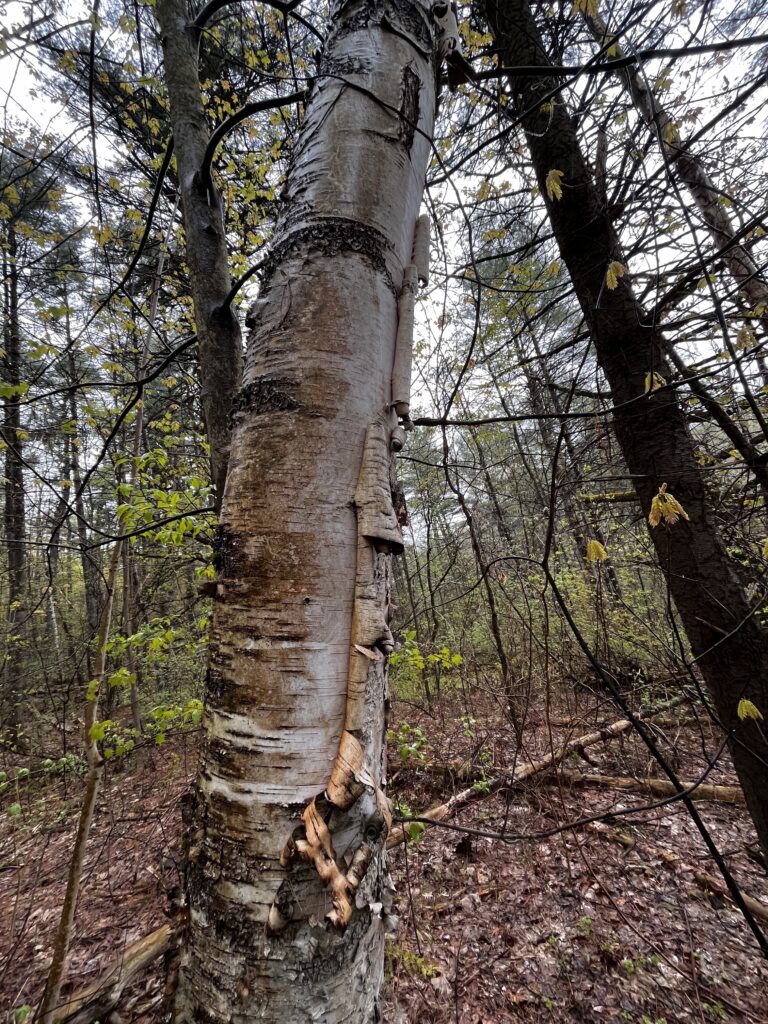
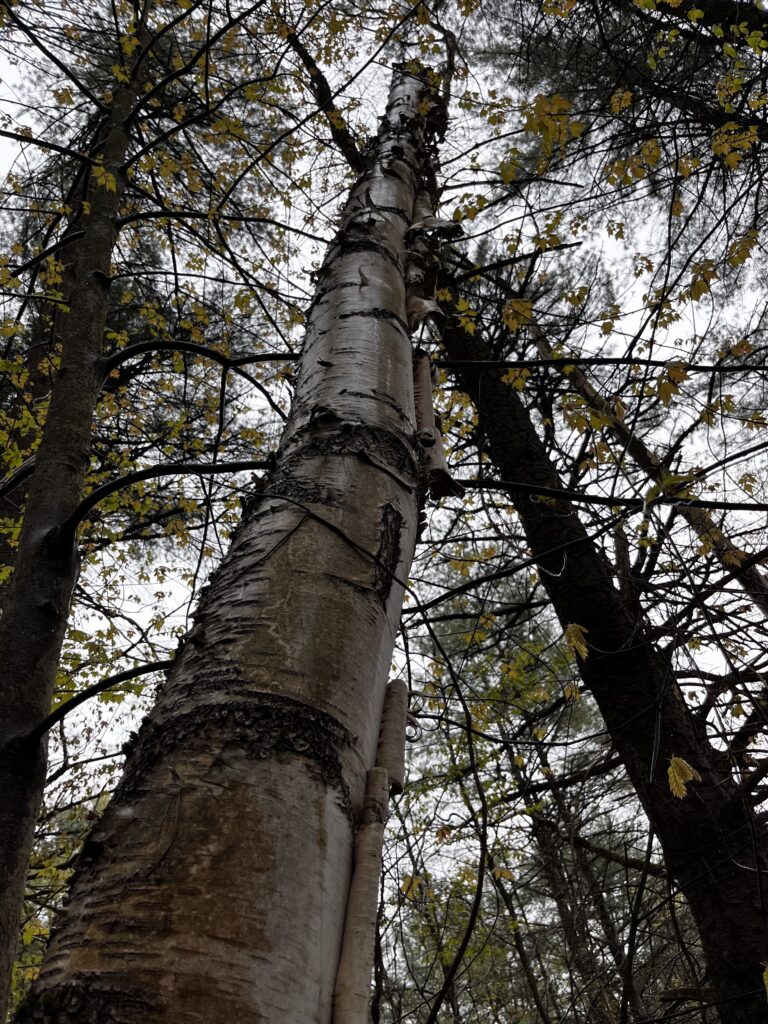
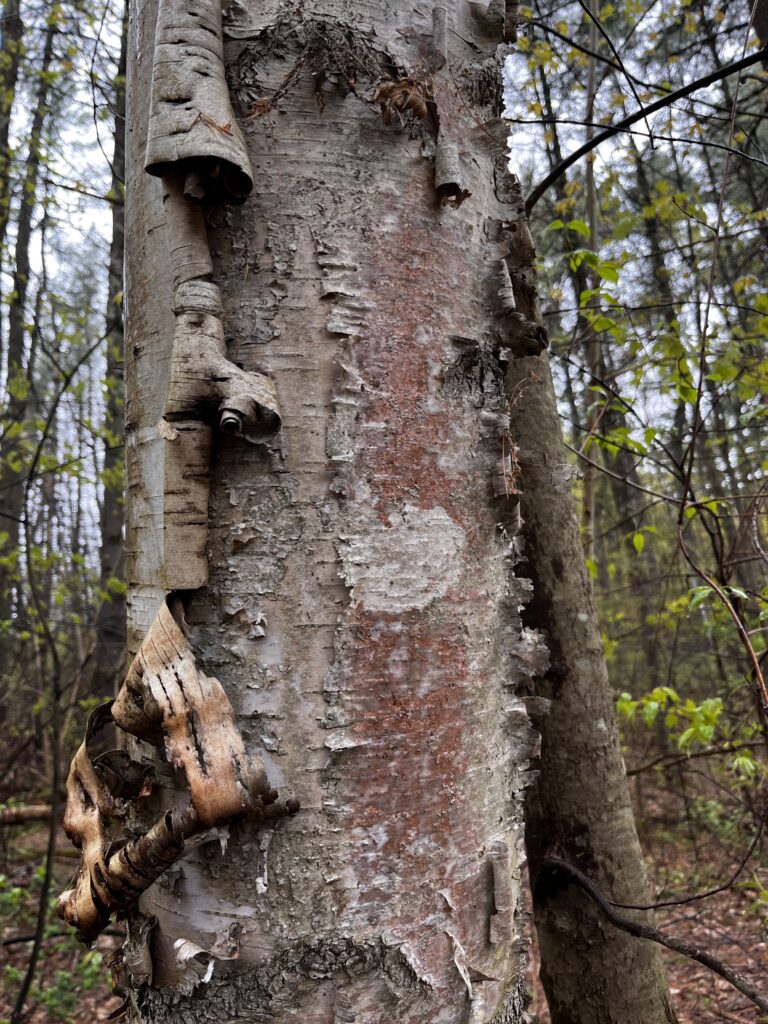
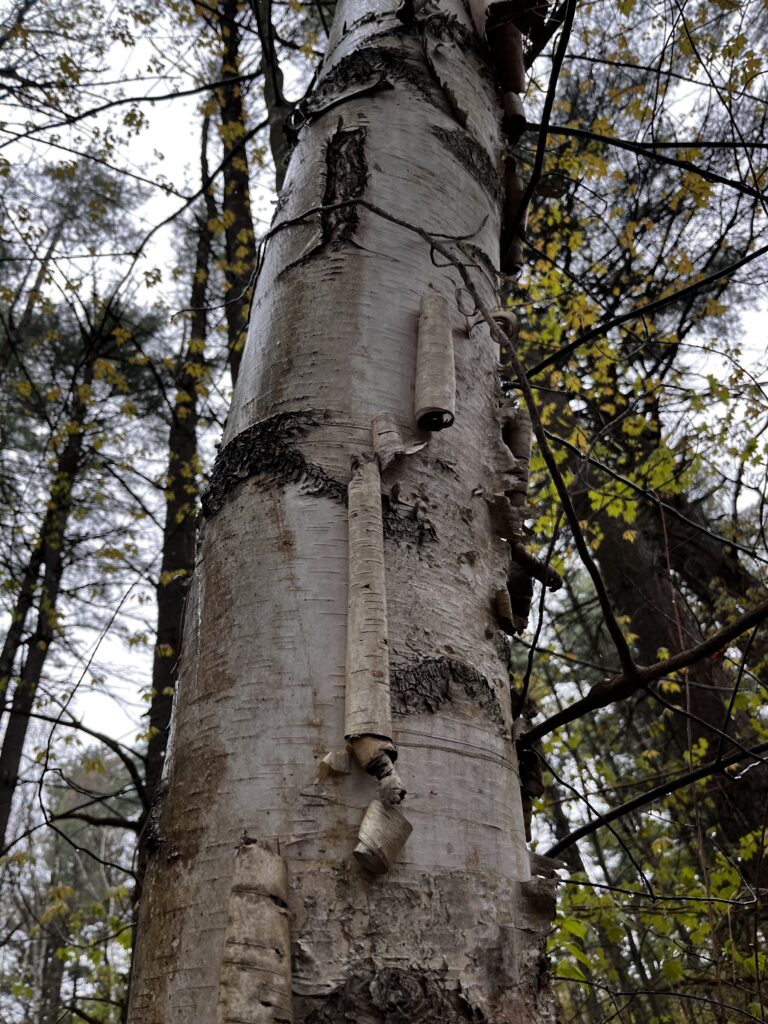
Birches start shedding their bark around May. It is almost shedding season, given that the increased amount of shedded bark is occurring at the end of April. Birches shed their bark similar to prevent insect infestation, prevent water loss, and simply because new skin/layers of bark are growing in.
I feel connected to my spot. I have empathy and respect for it. I know that I am sharing the land with organisms other than the human species and that humans are not the only ones on Earth. Humans would not be able to exist by themselves. I think the evolution between trees and humans is also really interesting and that these two entities are connected, given that, for example, yellow birches shed their bark similar to how humans shed their skin. We all are also reliant on carbon dioxide and oxygen, so it is important for humans to be conscious and protective of the air quality, given that they have the most influence on it. We are also reliant on water and need it for growth!
